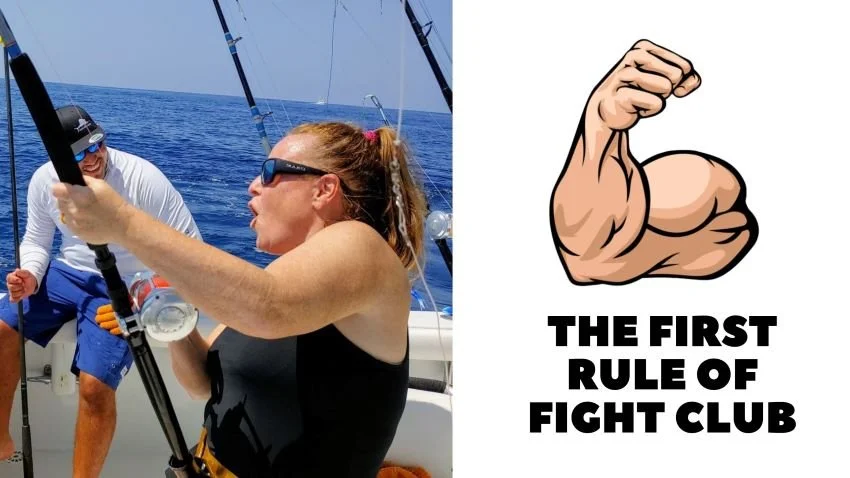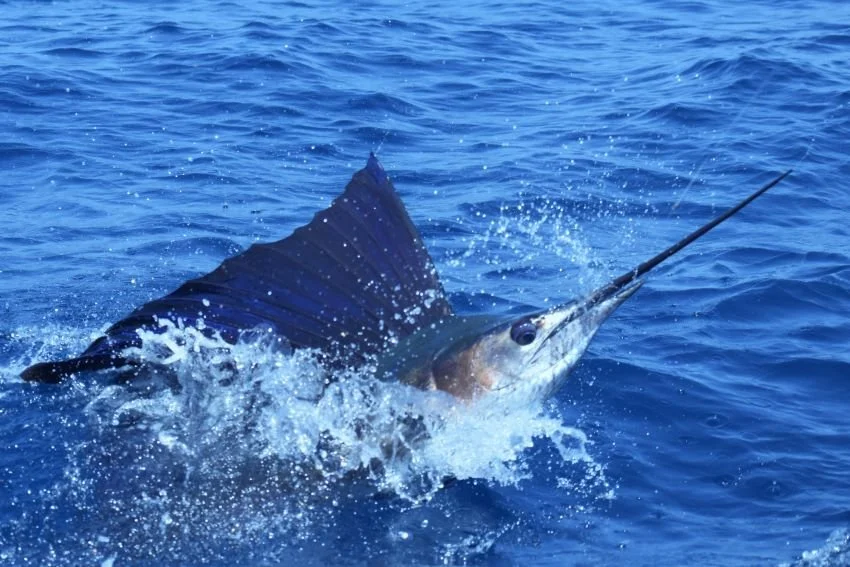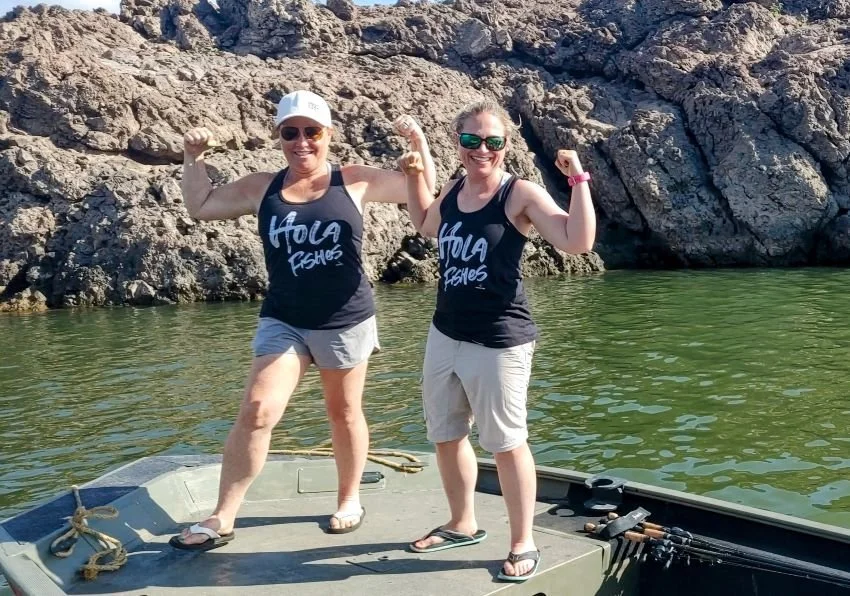Ten Rules of Billfish Fight Club for Beginners
When it took over an hour for me and my friends to subdue a 205-pound yellowfin tuna in Panama, I vowed two things: (1) I was going to get into better shape; and (2) I was going to learn how to fight fish more efficiently. While I’ve been tricked or beaten by bass, salmon and other freshwater species, I’ve never been so physically whipped. Without assistance, I’m not sure that the tuna would’ve made it to my plate.
You don’t have to be an Olympian power lifter to conquer tuna, let alone giant, hard-pulling marlin. Indeed, if you look around just a little bit you can see that there are plenty of spindly kids and petite 90-pound women who catch them regularly. They do it with a combination of smarts and technique.
Since many of the anglers who join us on our trips to Panama and Guatemala have minimal (or zero) experience offshore, I thought I’d provide a quick road map to monster fish fight club success. I’m not an expert, but these ten steps have helped me outkick my coverage:
First, go someplace where you’ll have multiple chances. If you hook into a giant marlin, crap the bed on the first leap, and then never get another chance, you won’t have an opportunity to learn from your mistakes.
Second, remember that strength helps but it’s not determinative.
Third, get in shape ahead of time. Make sure that your core, your back and your legs are up to snuff, and prepare to use them to your advantage.
Fourth, understand the tackle that you’ll be using. The reels employed in offshore fishing may have different features than your everyday bass gear. When in doubt, ask about how to operate it.
Fifth, use the tools that are available to you. That could be a fighting chair, a harness or a belt. They’re not crutches, but rather part of the game. Even when I’m using none of those, I often rely on a Cush-It to keep the sharp rod butt from jabbing into me.
Sixth, brace yourself. With a hard surge or a quick change of direction a massive fish can throw you off balance, causing you to mess up the fight or even get injured. If you’re not in a chair or otherwise strapped in, you can use a console or the boat’s transom to keep your body rock steady.
Seventh, be aware of cut off points. You may be using heavy tackle and heavy line, but a fish that surges under the boat, toward a reef, or into the jaws of a moving propeller may earn his freedom. Those are the times when you really need to put on the brakes.
Eighth, keep the line tight. This of course is true in all manners of fishing, but when you see your line entering a wave directly in front of you and the sailfish it’s attached to is leaping out of a wave 40 yards to the left, you’d better catch up if you want to get to the leader.
Ninth, remember that if you’re resting, he’s resting. A fish that you allow to rest is one that’s gaining the advantage. If you can get him going in the direction you desire, and keep him going that way, you have a leg up.
Tenth, and last, be quick but don’t hurry. Yes, you want to play the big fish on your terms as much as possible, but there are moments and segments of time when you have to let him do his thing. If you force the issue, you’re going to pay with frayed lines, bent-out hooks and hurt feelings.
No one wants to fail. No one wants to tap out. No one wants to go home from an epic fishing trip frustrated by the one that didn’t need to get away. These ten tips may seem simple, but if you fail on any one of them the likely outcome will be frustration.
I look forward to seeing your flex on one of our upcoming trips to Panama or Guatemala. Eat your Wheaties and reach out to Hanna to get on the books.







